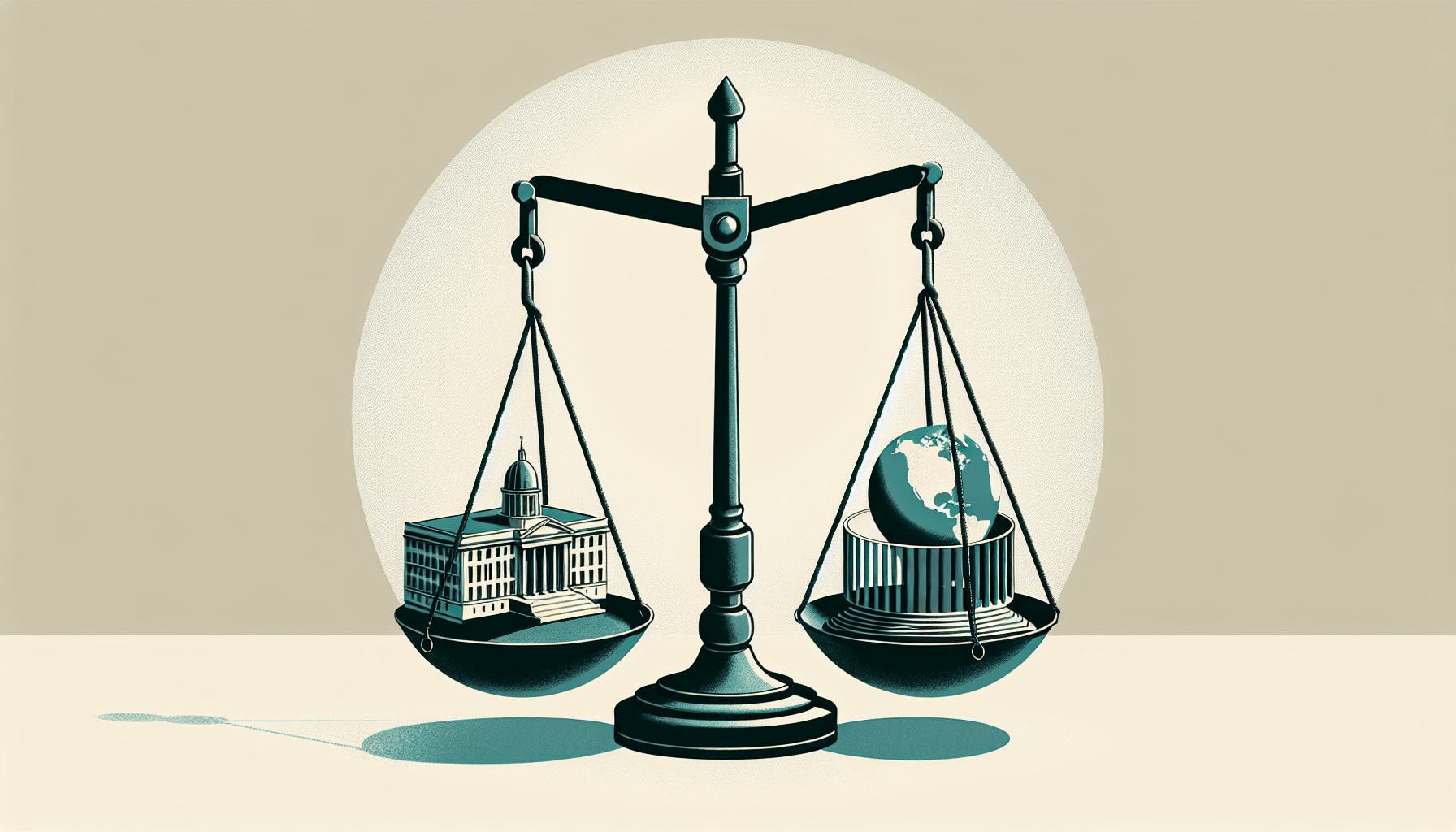Have you ever wondered about the financial relationships between countries? More specifically, have you asked yourself, “Is the US in debt to any other country?” This question is more complex than it may initially seem, as it involves a myriad of economic principles, global politics, and intricate financial agreements. Let’s unravel these complexities and understand how and why the United States is in debt to other nations.
Understanding National Debt
Before delving into specifics about the US and its debt relationships with other countries, it’s vital to understand what national debt actually means. National debt occurs when a country’s government borrows money to cover its expenses. This borrowing can result from ongoing projects, defense expenses, infrastructure maintenance, or shortfalls in national budgets.
Types of National Debt
National debt is typically categorized into two types: public debt and intragovernmental debt. Public debt includes all government borrowings from foreign governments, corporations, or individuals. Intragovernmental debt arises when the government borrows money from its internal resources, such as trust funds.
Why Countries Take on Debt
Countries, like individuals and companies, borrow money for various reasons. For some, it is to fuel economic growth, while for others, it’s about stabilizing the economy during difficult times. Running a country involves complex budgeting, and borrowing is often a tool used to balance these budgets efficiently.
The US Debt Situation
For many years, the United States government has often operated at a deficit, spending more money than it brings in through revenue such as taxes. Thus, it finances this deficit by issuing Treasury securities to investors—domestic and foreign.
The Scale of US Debt
The U.S. national debt is immense, amounting to trillions of dollars. This may sound alarming, but it’s crucial to understand its context. Many developed nations operate with substantial national debts. What differentiates their economic health is factors like GDP, economic growth rates, and how they manage their debts.
Foreign Holders of US Debt
It’s interesting to note that foreign countries are significant holders of US debt. They acquire US Treasury securities as a means of investing their economic surpluses, securing their investments, and maintaining economic balance.
Countries the US Owes Money To
So, which countries does the US specifically owe money to? Here is a simplified table to provide some clarity regarding the largest foreign holders of US debt:
| Country | Approximate Holdings (in billions) |
|---|---|
| Japan | $1,200 |
| China | $1,100 |
| United Kingdom | $450 |
| Ireland | $300 |
| Luxembourg | $250 |
These numbers can fluctuate based on economic conditions and government investment strategies. However, Japan and China consistently remain the top holders of US debt.
Why Do These Countries Buy US Debt?
Several reasons prompt countries like Japan and China to buy US debt. The most significant is that US Treasury securities are considered a safe investment. They offer a reliable return, backed by the stability of the US government. Furthermore, holding US currency can help these countries manage their own exchange rates more effectively.
How Does This Debt Affect US Relations?
The financial dependence reflected in these debts can influence bilateral relations. It creates interdependency, meaning what benefits or adversely affects one country can, in turn, impact the other.
Economic Diplomacy
Debt ownership becomes a tool in economic diplomacy. Countries holding significant US debt may wield influence in certain negotiations, although it is rarely the sole determinant in diplomatic decisions.
Global Economic Stability
The ownership of US debt by foreign nations contributes to global economic stability. When countries invest in each other’s security, it reduces the likelihood of economic isolation or hostile activities, fostering a more interconnected global economy.

Debunking Myths About Debt
Despite the alarm bells that large numbers might trigger, it’s critical to dispel certain myths about national debt.
Myth 1: The US Is at the Mercy of Its Debtors
One common misconception is that the US is at the mercy of countries like China or Japan. However, these countries invest in US debt because of the trusted and relatively secure returns. Pulling out such investments haphazardly would harm their own economic interests too.
Myth 2: Foreign Debt Is Entirely Negative
While holding a portion of national debt externally does indicate financial dependency, it’s not wholly negative. It fosters international alliances and economic collaboration.
Myth 3: High Debt Equates to Weak Economy
It’s a fallacy to equate high national debt with a weak economy. A nation’s economic health depends on various factors including economic policies, infrastructure, and overall growth rate, not merely the debt size.
How Debt Has Shaped US Economic Policies
National debt shapes a country’s economic policies significantly. The US has had to innovate and adjust its fiscal strategies over the decades.
Interest Rates and Policy Decisions
Interest rates are an essential part of debt management. They determine the cost of borrowing. When the national debt is high, the Federal Reserve may adjust interest rates to manage inflation and ensure sustainable economic growth.
Debt Limit and Government Budget
The debt limit debates often dominate the US Congress. Increasing the debt limit allows the government to meet financial obligations. However, negotiating this increase often involves significant policy discussions and trade-offs.
The Future of US Debt
Looking forward, understanding debt management will remain crucial. The US must balance national spending with its borrowing to ensure sustainable economic growth without compromising its fiscal reputation.
Technological Advancements
Emerging technologies might revolutionize how national debt is managed. These include blockchain for transaction transparency and AI for predicting economic trends.
Potential Economic Policies
New administrations could introduce economic policies that either expand or restrict borrowing. They might prioritize infrastructure, healthcare, or education depending on national priorities.
Conclusion
In summary, yes, the US is in debt to other countries, but this debt is a part of complex global financial systems. It involves strategic economic relations, global stability, and policy decisions. While holding national debt might seem risky, it often facilitates international cooperation and investment stability. Understanding these dynamics provides a more comprehensive view of the US’s place in the global economy.
Remember, the topic of national debt is vast and ever-changing. Staying informed about these economic issues can help you understand their impact better and how they shape the world in which you live. Feel free to consider how these financial intricacies affect not just nations, but individuals and the global community as a whole.



